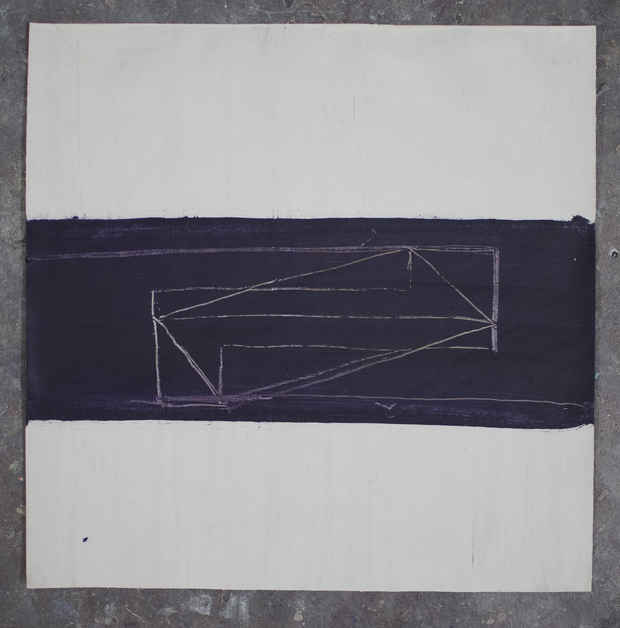Paul Pagk "18 Drawings and 1 Painting"
Studio 10

This event has ended.
The works on paper are made through a particular three step process. This begins with Pagk’s preparation of the paper’s surface with an oil and rabbit skin based gesso. For Pagk, the gesso becomes the primary matrix upon which color is painted. Lines are marked into the oil paint using a pencil or a silver crayon to excavate to through to the layer of gesso. Flecks of dried gesso float like burr at the edges of the engraved line raised by the pencil point. With this system Pagk created the exhibited series -Search for Mengfu-. Each work was executed on Pagk’s studio floor where he usually draws and the series concluded when the last sheet of prepared Gesso paper was used.
The works on paper were made concurrently with two paintings. While Pagk worked on the canvases, the prepared gesso paper lay waiting intervention. At intervals, while painting the large canvas, Pagk used the same brush to put down a horizontal stroke of paint on the paper, when the painting changed hue, so did the work on paper. Pagk’s concurrent practice connects the paintings with the works on paper. They hold the common premise of each other as points of origin.
Double Entente, 2012 is a large painting of cadmium maroon and white included in this exhibition. It is set in compliment and contradistinction to the works on paper. The linen canvas is divided by two white parallel elements. The strict, incised forms strike like austere hieroglyphs through the thickly layered skin of the ground. Image, surface and linear activity are equally subjects of the composition for Pagk. In this painting, the white paint assumes a similar function to that of the gesso in the works on paper as negative space.
Pagk’s painting envelops the viewer while the works on paper pull the viewer inwards. This is in part because the parallel banners or bands on either side act to narrow the picture plane defining a linear composition and creating tension. Tension is particularly palpable at the junctions where the lines meet and cross. Pagk’s drawings contain a repeated and reduced vocabulary of gesture. The lightly rendered appearance and thread like lines of the internal forms avow an inherent immediacy. These works are not preparations or studies. They exist as other manifest thoughts the artist has on line, form and space. This body of work has precedent in Pagk’s drawings at the Collection du FRAC Picardie in Amiens, France where the drawn lines depict broken geometries akin to falling architectural spaces. The elementary forms create a kind of structure that is not a structure but rather an imagined place. Pagk cites classical Chinese painting and pottery from the Song Dynasty as among the influences on his drawing practice. As with the Chinese works, you can wander through Pagk’s small paper works and experience them as physical entities with phenomenological affect.
Paul Pagk is British born and lives and works in New York. He has exhibited atMiguel Abreu Gallery, New York, USA; Galerie Eric Dupont, Paris, France; Baukunst Galerie, Köln, Germany; Exit Art, New York USA, Some Walls, Oakland, CA, USA;Sue Scott Gallery, New York, USA; Markus Winter, Berlin, Germany; Thread Waxing Space, New York, USA; Galerie Jean Fournier, Paris, France; Thomas Erben Gallery, New York, USA; CRG Gallery, New York, USA; Frac Picardie , Amiens, France; Musée Goya, Castres, France; and Le 10neuf, C.R.A.C. Montbéliard, France. Hereceived The Pollock-Krasner Foundation Grant, New York, USA and
The Adolph and Esther Gottlieb Foundation Individual Support Grant, USA.
Media
Schedule
from April 12, 2013 to May 05, 2013
Opening Reception on 2013-04-12 from 19:00 to 21:00